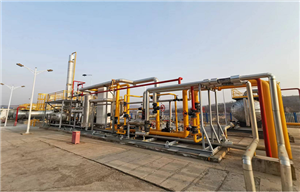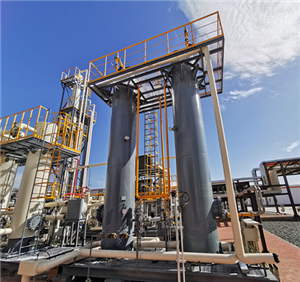México 'de la principal central eléctrica
Mexico’s national electrical system serves about 97% of all Mexicans. In recent years electrical generation has not been able to keep pace with demand for electricity, which is increasing at about 6% to 7% per year. Attempts to increase private sector investment in energy as a means to keep up with surging demand have met opposition in the Mexican Congress. Under current law, private investors may generate electricity but transmission and distribution are restricted to the Federal Electricity Commission.
About 30% of Mexico’s total installed electricity generating capacity of 60,000 MW comes from conventional power plants burning oil. Natural gas-fueled power plants account for about 35%, while coal plants contribute about 9%. Altogether, fossil fuel burning facilities account for almost three-quarters of Mexico’s generating capacity.
Many of Mexico’s newer power plants are highly efficient, gas-fired, combined cycle plants which integrate gas and steam turbines. On a per megawatt basis, they are relatively economical to build. Their major disadvantage (equally true for conventional thermo-electric power stations) is that their emissions contribute to air pollution (particularly sulfur dioxide) and global warming. About 25% of Mexico’s annual emissions of carbon dioxide are due to electricity generation.
Hydroelectric power has been important since the early part of the twentieth century. Currently about 22% of the electricity generating capacity is from hydroelectric plants. The largest hydroelectric plants are on the Grijalva River in Chiapas. Other rivers providing significant hydropower are the Balsas, Santiago, Fuerte, Papaloapan and Moctezuma.
Mexico has one nuclear power plant at Laguna Verde in Veracruz, which provides about 2.6% of the nation’s generating capacity. No additional nuclear plants are planned.
Mexico has the world’s second largest geothermal electrical potential, after Indonesia. This resource might be more important in the future but at present it accounts for less than 2.4% of Mexico’s electricity capacity.
The region of Mexico with most potential for wind power is the low-lying and flat Isthmus of Tehuantepec in southern Mexico where annual wind speeds, at a height of 30m (100 ft) above the ground (the height of modern windmills), average more than 30 kph (19 mph). Despite the success of the windfarms already operating in La Venta (Oaxaca) and Guerrero Negro (Baja California Sur), wind power is responsible for less than 0.05% of all electricity. The government hopes to boost wind power capacity significantly within the next five to ten years.
Most solar power interest is focused not on large scale plants but on small-scale photovoltaic (PV) systems providing electricity in remote rural areas. About 3 million people (3% of the population) live in small or remote settlements not yet connected to the national electricity grid. More than 60,000 PV systems have been installed nationwide, benefiting 250,000 rural inhabitants.
Comes from Geo-Mexico




